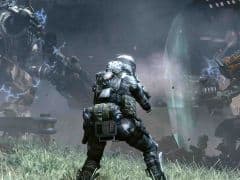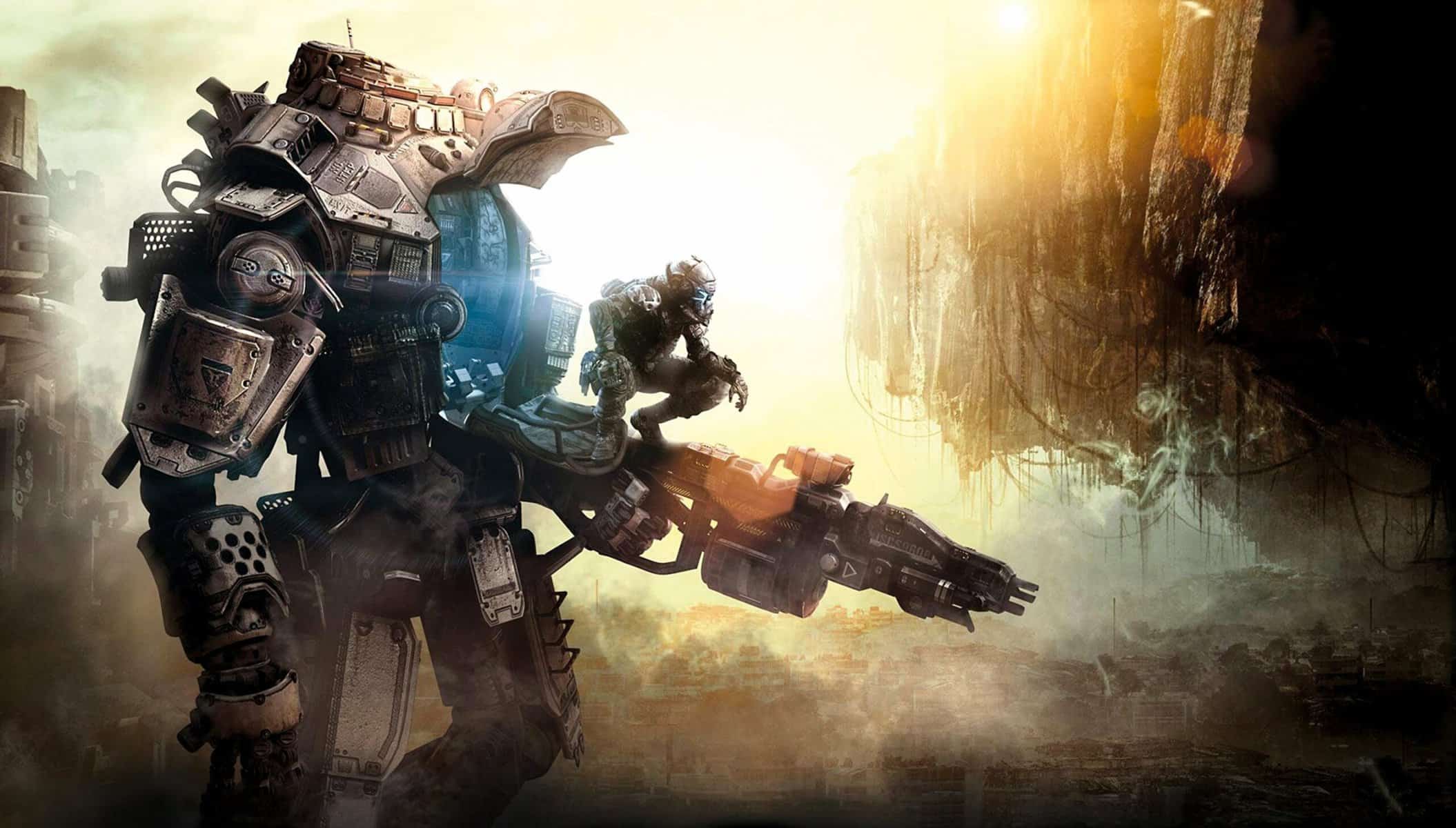You can trust VideoGamer. Our team of gaming experts spend hours testing and reviewing the latest games, to ensure you're reading the most comprehensive guide possible. Rest assured, all imagery and advice is unique and original. Check out how we test and review games here
Remember Call of Duty? Of course you do: what with the yearly releases, big-budget advertisements, constant DLC and general feeling of publisher desperation, it’s difficult to forget. But I’m not talking the stale and stupid marketing machine-cum-videogame that the series has become these days. Instead, I’m talking about CoD 2, or Modern Warfare: remember when Call of Duty was something to look forward to?
Those days seem long gone, and indeed probably are. But there was a time when Call of Duty was something special, rather than the witless cash-grab it is now. It seems unlikely that any of Activision’s seventy-five development teams will ever recapture that magic. Thankfully, Titanfall seems to be on a mission to do exactly that.
Like Evolve, Respawn’s game is a spiritual successor, and it feels like a logical expansion of the ideas that formed CoD long before it were handed off to other development teams and milked in a way that would make 90s Capcom both ashamed and proud. From the moment the tutorial starts, it feels like the CoD sequel you’ve been asking for for years, but never got because Uncle Bobby needs to put fuel in his plane. From the screen furniture to the loadout system, the reloading animations to the movement speed, this is a Call of Duty game, in all but name.
It’s also a title that, despite the addition of pilotable robots, free-running, jetpacks and AI players, is tighter and more cohesive than the bloated mess that Activision is offering these days (and, really, has been since MW2).
If I needed to give it a back-of-the-box buzzphrase – if I was in marketing, say, and hated myself with a passion – then ‘focused chaos’ would fit the bill. Striding onto the battlefield – ruined city streets and office blocks or a cliffside shootout, in this hands-on – as a pilot, you’re fast and agile, able to run up walls, double jump across buildings, and clamber all over the show like an amphetamine-spiked Spider-Man.
Despite this newfound freedom, the game controls as well as you’d expect for one made by the team that essentially defined run and gun. There’s a pleasing weight to your pilot, and plenty of lines of vertical and horizontal movement to exploit. Some players look at the Call of Duty series as akin to racing games, with the best route to success often found in knowing every corner of the map and ‘running’ it as such. Titanfall takes this to the logical extreme, offering a complex – but not complicated – set of options to players.
This complexity naturally leads to dynamic encounters. Various gamers may have thrown their toys out of the pram when it was announced that the game would only support 12 human players on the field, but it’s a smart call given a) the amount of offensive options available and b) the introduction of bots.
Both sides have their own selection of AI drones backing them up, which can prove both help and hindrance. Having more firepower on your team is always good, but your NPCs can be used against you. In the Attrition gametype – team deathmatch, essentially – your mission is to grind the other team down, scoring enough points to win the round and force them to retreat (which we’ll get to in a bit). ‘Marvins’ are standard cannon fodder, stupid yet good for distraction. Spectres, on the other hand, are more of a liability: powerful, but any aggressor with a Data Knife can hack your Spectre and take it for their own. So, despite their limited uses, your (rather dumb, it must be said) AI troops aren’t to be relied on.
They do, however, serve a more important role in the game, and that is to keep players of both sides killing. Marvins and Spectres aren’t worth as much as pilots on the score sheet, but they remove the classic frustration of Call of Duty play: namely, you’re often killed more than you kill. Here, the AI works as a relief from that frustration, keeping the moment-to moment play engaging. They also serve as a springboard to better things.
/https://oimg.videogamer.com/images/7dd8/titanfall_loadouts.jpg)
Which, in this instance, is calling in your Titan. Unlike killstreak rewards, each player has access to the vehicle by default: rather than if, it’s now a matter of when. Killing enemies (human-controlled pilots especially) runs the clock down faster, reducing the time until you can (manually) deploy your very own war bastard.
It’s at this point where Titanfall goes from being a good game to a potentially great one. Mid-battle, the dynamic changes considerably, as everyone clambers into the cockpit of their Titan and resolves to ED-209 the f*** out of everyone else.
You certainly can do that: like the pilots the Titan is customisable, with options ranging from rocket launchers and chain guns to auto-ejects and more powerful defensive capabilities. But it’s not the all-conquering death machine you might think it is, especially when your team is facing off against similarly-armed opponents.
Sure, you can stomp around like a robotic toddler that’s somehow got the keys to America’s arsenal, but you’re now a massive target. Only diligent use of the boost meter to dodge, along with defensive elements such as a vortex shield – which catches enemy ordinance and can fire it back – will stop you from having to hammer X to eject before you go all Steel Battalion.
Novice players will spend most of their time in the Titan, of course, but other options are available and even encouraged. A personal favourite of mine was leaving the armour in ‘follow’ mode (you can also leave it guarding a certain spot) and then jumping onto the nearest enemy mech.
From here, you can ride around, giving your team updates on its (your) position. Or, more likely, you can recreate the climactic scene from Robocop 2, ripping open the enemy Titan’s control panel and firing your weapon into it, disabling the beast. (Sadly, this doesn’t climax with you smashing the enemies brain against the floor, as in that film. DLC?)
The whole game is set up for this sort of strategic rock/paper/scissors play, with the 6v6 limit a key part of this. Despite the many offensive options available to players, and the routes to enemy territory available to them, the low team size means moving together is encouraged, whether in or out of the Titan. But then, of course, given the smaller map sizes, you might find yourself cornered and there for the taking.
Even if you do find yourself dominating, another player might deploy one of their Burn Cards, single-use perks that last one life and give you access to buffs such as faster movement speed or more powerful weapons.
Likewise, choosing the right gear is key: there seems to be fewer weapons, attachments and other toys to equip your Titan or pilot with than in CoD, but this is a good thing: more focus on weapons and perks that matter, less on Other Bullshit.
/https://oimg.videogamer.com/images/edca/titanfall_screen_3.jpg)
And that seems to be Titanfall’s MO. It might enable you to control a hulking death-beast before ejecting hundreds of feet in the air and shooting someone on the way down, but at its core Titanfall feels as lean and refined as Call of Duty used to do, while also innovating with additions like the epilogue, which sees defeated players having to escape via dropship in an allotted time (and with one life). It’s one of the best additions to the multiplayer shooter, and speaks of a developer that’s actually thought about how to improve the template, rather than simply exploit it.
If it can provide enough variety in its maps (I only saw two) and modes (Last Titan Standing, Attrition and Hardpoint where all that was on offer) then this could be one of Xbox One’s first real must-have titles.







